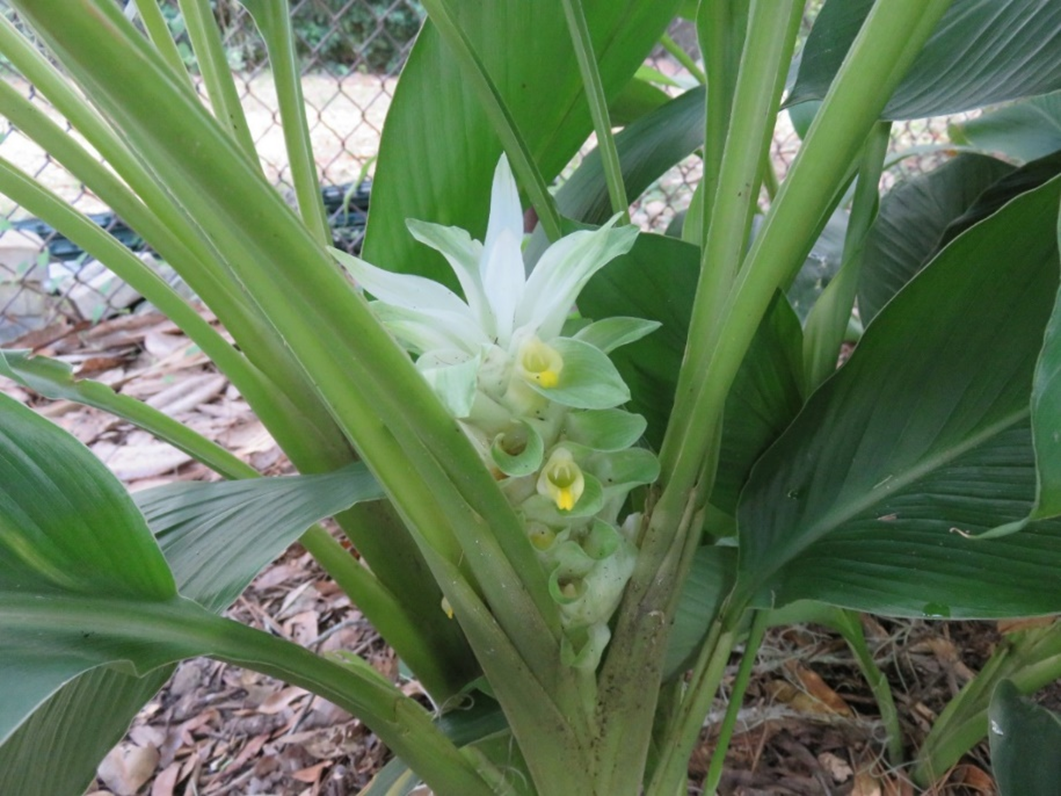Mark Bailey: Ginger and turmeric in the garden

Ginger and turmeric are two closely related spice plants that can be readily grown throughout most of Florida. They belong to the Zingiberaceae family of plants that also contain cardamom.
Both plants are widely used for culinary and medicinal purposes throughout the world.
Before growing any crop, it is helpful to know geographically where the plants originated. Such information informs the grower of the conditions the crop is most well-adapted. In the cases of ginger (Zingiber officinale) and turmeric (Curcuma longa), they both originated from humid tropical regions of southern and southeast Asia. While they are naturally adapted to tropical conditions, they will likely die back to the ground when freezing temperatures occur. Even though everything may appear dead above ground, these plants should come back about a month after the last chance of frost has passed.
Once shoots have emerged from the ground, they will grow to about 4 feet and remain clumped in the area they were planted. They can be grown in large pots or directly in the ground.
Ginger and turmeric grow best in well-drained loamy soils with a pH of around 5.5 to 6.5. They can be grown in full sun if irrigation is provided; however, they also can grow well in partly shaded locations. These plants are propagated not by seeds or cuttings, but rather through underground modified stems called rhizomes. When choosing rhizomes, such as from a grocery store, choose firm, plump rhizomes free of mushy or dark brown spots. Plants also can be purchased at some local nurseries.
It is best to plant ginger and turmeric rhizomes in spring or early summer. Inspect the rhizomes to ensure they are healthy and contain buds that will produce shoots after planting. Rhizomes can be soaked for several hours before planting to help stimulate sprouting. A segment of rhizome at least 2 inches long with several buds is commonly used when planting a new crop. Plant the rhizomes about 1 foot apart and no more than 2 inches deep in the soil. It’s best to take a soil sample before planting in a new location to determine the soil pH and existing nutrients. That information will help determine which nutrients are necessary to add. At the time of planting, about 2 ounces of 10-10-10 fertilizer can be mixed into the soil immediately surrounding each rhizome. An additional 3 to 4 ounces of fertilizer can be added about every six weeks until harvest. After planting, keep the soil consistently moist with light and frequent irrigation. After planting, expect shoots to begin to emerge after a month or two. After at least nine months of growth, rhizomes are ready to be harvested by digging up the underground rhizomes. Gently wash and dry the rhizomes, then store them in an open and dry location away from direct sunlight.
Ginger and turmeric rhizomes can be consumed fresh, dried, ground into powder or candied. Both spices can be used for nearly innumerable dishes and beverages that range from very spicy to mild and soothing. Ginger and turmeric also have been used for many centuries for medicinal purposes. Each contains antioxidants that can aid in reducing oxidative stress to cells. Ginger can help reduce symptoms of nausea for some, and turmeric has anti-inflammatory properties. These two plants are among the easiest to grow, are incredibly flavorful and may provide medicinal benefits. Given how easily these plants can be grown and the many benefits they provide, everyone should consider adding ginger and turmeric to their garden.
For more information, call the Marion County Extension office at 671-8400 or email ironhill@ufl.edu.
— Mark Bailey is the Sustainable Agriculture and Food Systems Extension Agent for UF/IFAS Extension Marion County. For more information, contact the Marion County office at 671-8400. The Extension Service is located at 2232 NE Jacksonville Road, Ocala, FL 34470.
This article originally appeared on The Gainesville Sun: Mark Bailey: Ginger and turmeric in the garden

